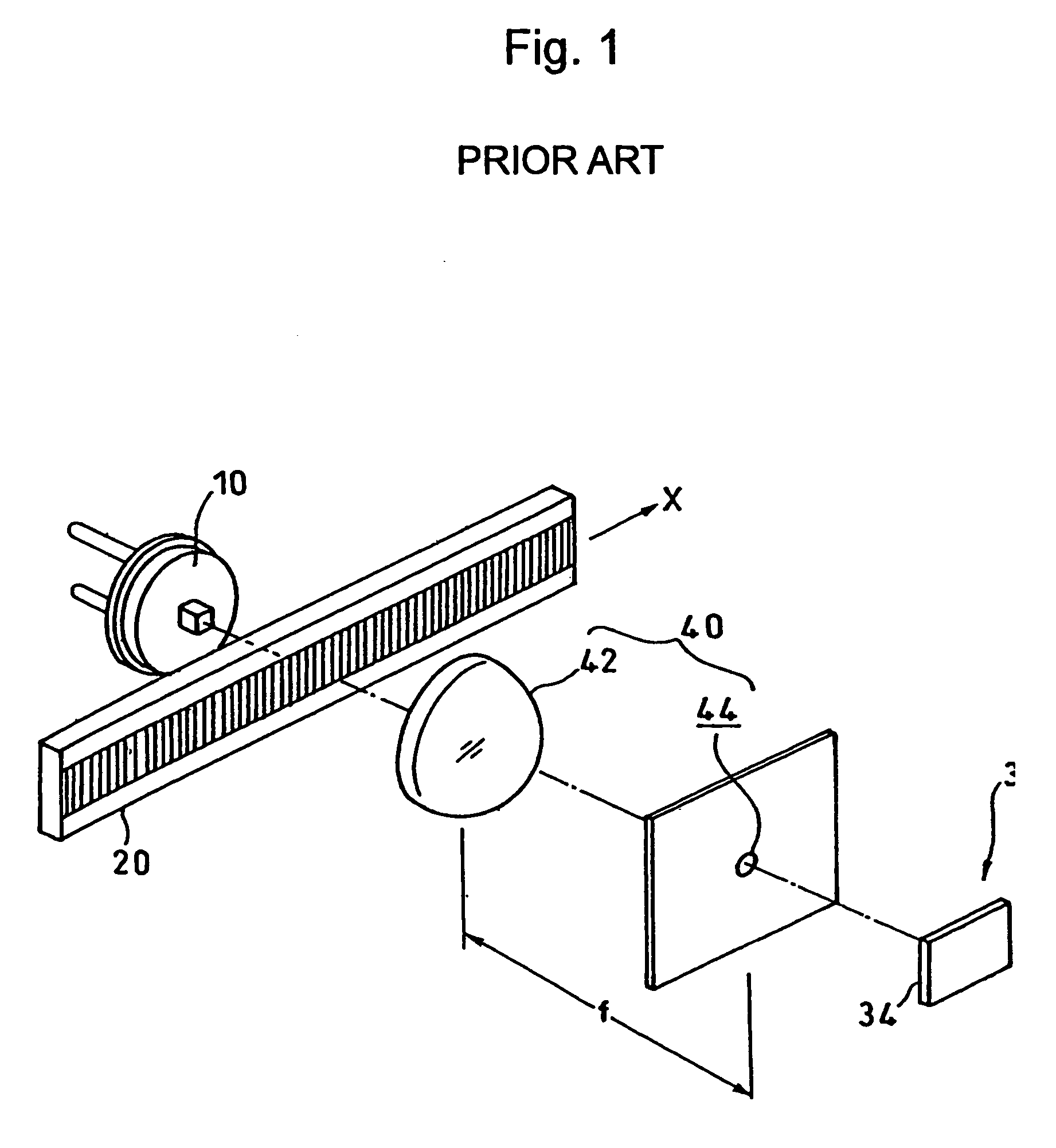Photoelectric encoder
a technology of photoelectric encoder and encoder, which is applied in the direction of converting sensor output optically, instruments, measurement devices, etc., can solve the problems of reducing signal detection efficiency and the inability to make the optical system smaller, and achieve the effect of preventing a reduction in contras
- Summary
- Abstract
- Description
- Claims
- Application Information
AI Technical Summary
Benefits of technology
Problems solved by technology
Method used
Image
Examples
first embodiment
[0038]the invention includes, as shown in FIG. 7, a scale 20, a lens 42, and a light receiving element 34, which are disposed so that a subject plane of the scale 20, a principal plane of the lens 42, and an image plane of the light receiving element 34 satisfy the Scheimpflug rule and an angle θ1 between the subject plane and the principal plane of the lens and an angle θ2 between the principal plane of the lens and the image plane match each other.
[0039]In the present embodiment, since θ1=θ2, the optical magnification of an image is given by
M=tan θ2 / tan θ1=1
implying an optical system with 1× magnification.
[0040]In particular, when θ1=θ2=45°, the sum θ1+θ2 comes to 90°, so that assembly becomes easy.
[0041]Further, as a modification shown in FIG. 8, an aperture 44 may be inserted at a focal point of the lens 42 to constitute a telecentric optical system 40.
second embodiment
[0042]As in a second embodiment shown in FIG. 9, it is also possible to constitute an optical system with M× magnification by setting as θ1≠θ2.
third embodiment
[0043]Next, the present invention will be described in detail with reference to FIG. 10.
[0044]The present embodiment relates to a photoelectric encoder that has a lens optical system 50 configured such that a second lens 48, which is the same as the lens 42 (referred to also as “first lens”), is inserted on the opposite side of the first lens 42 in a reverse fashion so that its focal point is located at focal point of the first lens 42. In this photoelectric encoder, the scale 20, the lens optical system 50, and the light receiving element 34 are disposed so that the subject plane, a plane (referred to as “focal plane”) which includes the focal points of the first lens 42 and the second lens 48 and being perpendicular to optical axis, and the image plane satisfy the Scheimpflug rule and the angle θ1 between the subject plane and the focal plane and the angle θ2 between the focal plane and the image plane match each other.
[0045]In the present embodiment, since the first lens 42 on th...
PUM
 Login to View More
Login to View More Abstract
Description
Claims
Application Information
 Login to View More
Login to View More - R&D
- Intellectual Property
- Life Sciences
- Materials
- Tech Scout
- Unparalleled Data Quality
- Higher Quality Content
- 60% Fewer Hallucinations
Browse by: Latest US Patents, China's latest patents, Technical Efficacy Thesaurus, Application Domain, Technology Topic, Popular Technical Reports.
© 2025 PatSnap. All rights reserved.Legal|Privacy policy|Modern Slavery Act Transparency Statement|Sitemap|About US| Contact US: help@patsnap.com



